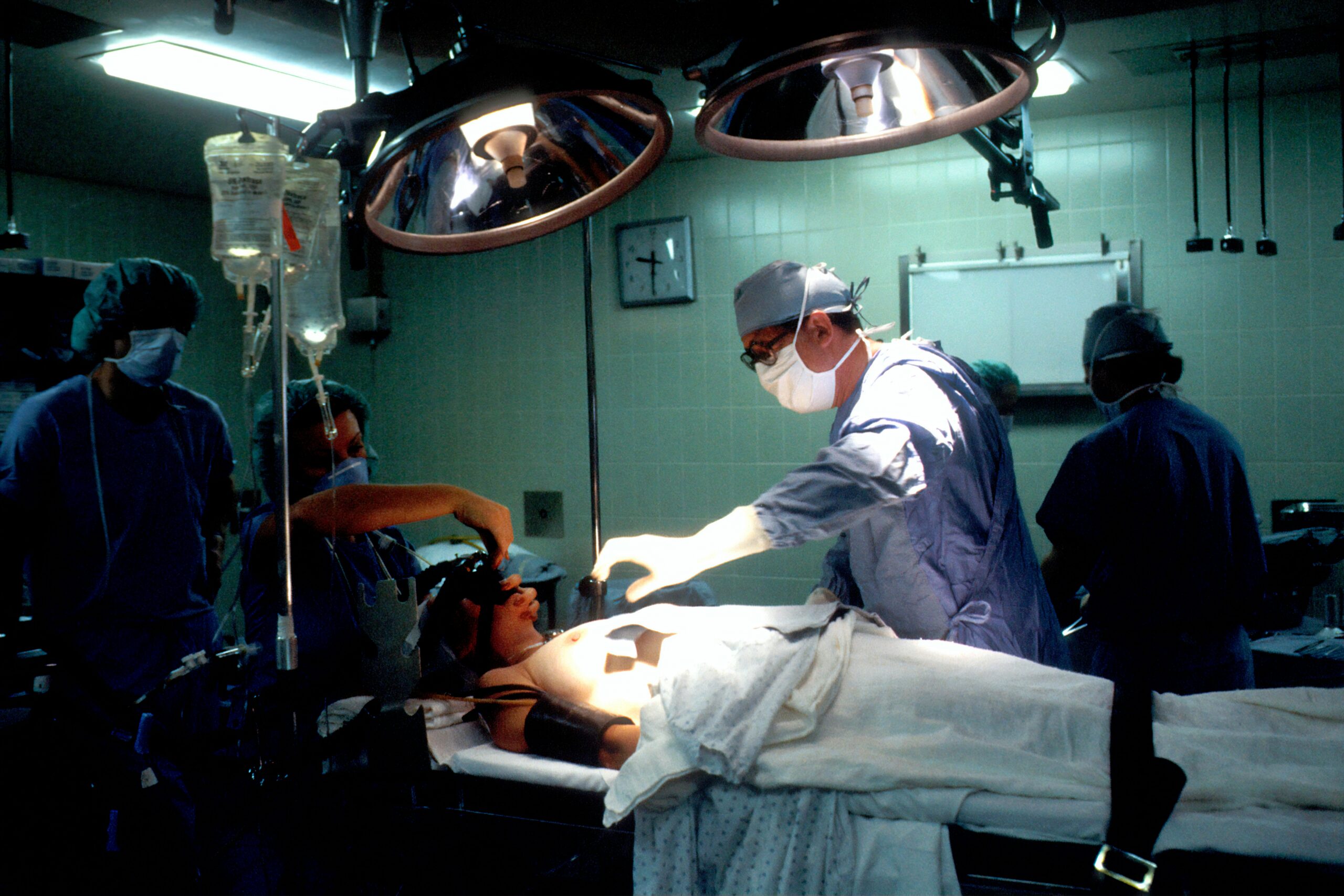An Introduction to Cataracts and Surgery
Cataracts can quietly steal your vision, making the world appear hazy and dim. If you or a loved one are facing this common eye condition, cataract surgery may be on the horizon. While many people find relief through this procedure, there’s often curiosity surrounding the timing—specifically, how long should you wait between surgeries for each eye? Understanding the nuances of cataract surgery is crucial not only for effective treatment but also for managing expectations during recovery. Let’s investigate what factors influence the timing between surgeries and how to navigate your path to clearer vision!
Factors That May Determine the Time Between Surgeries
Several factors can influence the length of time you wait between cataract surgeries.
The severity of the cataracts plays a crucial role. If one eye has more advanced cloudiness, surgeons may first prioritize it for treatment.
Patient health is another significant consideration. Conditions like diabetes or heart issues could necessitate a longer waiting period to ensure safe surgery.
Additionally, the availability of qualified surgeons can affect scheduling. Busy practices may have limited slots, which can lead to extended waits between procedures.
Personal preferences and lifestyle choices also come into play. Some individuals might opt for immediate surgery on both eyes, while others prefer spacing them out based on comfort levels or recovery needs.
A. Severity of Cataracts
The severity of cataracts plays a crucial role in determining the timing of surgeries. Some individuals experience mild symptoms, while others face significant impairment in vision.
When doctors diagnose cataracts at an early stage, they may recommend monitoring before undergoing surgery on either eye. This wait-and-see approach can be beneficial for those whose daily activities aren’t severely impacted.
Conversely, advanced cataracts often require immediate intervention. If one eye is significantly more affected than the other, it may be necessary to prioritize surgery on that eye first.
This urgency reflects not only the individual’s quality of life but also their overall health and ability to cope with impaired vision during recovery. Each case is unique, guiding professionals to tailor their recommendations based on specific needs and circumstances.
B. The patient’s health
The health of the patient plays a crucial role in determining how long to wait between cataract surgeries. Underlying medical conditions can influence recovery times and surgical outcomes.
For instance, patients with diabetes may experience slower healing. This could necessitate longer intervals before proceeding with surgery on the second eye. Likewise, those with heart or respiratory issues might require additional assessments prior to scheduling their next procedure.
Age is another factor that influences health status. An older patient may face different risks compared to someone younger, potentially leading to variations in timing between surgeries.
Additionally, overall eye health is important. If there are other ocular conditions present—like glaucoma or macular degeneration—the surgeon might recommend extra time for careful management and assessment. Timelines for cataract surgery must consider the unique circumstances of each patient.
Surgeons are available.
The availability of surgeons can significantly impact the timing between cataract surgeries. High demand for ophthalmologists often leads to longer waiting periods, especially in busy clinics or hospitals.
If your healthcare provider is part of a large practice or NHS facility, scheduling may take longer due to patient volume. This could push back your second surgery date.
On the other hand, private practices may offer more flexible options for scheduling. If you’re looking to expedite your process, this route might be worthwhile.
It’s essential to communicate with your surgeon about their schedule and any potential delays. Understanding their availability can help set realistic expectations as you plan for both procedures.
Standard Timeframe for Cataract Surgery on Each Eye
After the initial cataract surgery, a typical timeframe for operating on the second eye generally ranges from one week to several weeks. Many factors influence this schedule.
Surgeons often consider how well the first surgery went and the patient’s recovery speed. If everything progresses smoothly, some might opt for closer scheduling.
Conversely, if complications arise or healing takes longer than expected, a delay may be necessary. Each patient’s health and comfort level are paramount in determining when to proceed with the next procedure.
During this period, healthcare providers also assess visual needs. Patients who rely heavily on clear vision may prefer quicker follow-ups compared to those experiencing milder symptoms.
Communication between patients and their surgeons is vital in establishing an appropriate timeline tailored to individual circumstances.
There are risks and benefits associated with waiting longer between surgeries.
Delaying cataract surgery between eyes can present both risks and benefits. The potential for worsening vision in the untreated eye is one significant risk. This could impact daily activities, such as reading or driving, leading to accidents or injuries.
On the other hand, waiting might allow time for further evaluation of your specific condition. If complications arise during recovery from the first surgery, it may be beneficial to postpone operating on the second eye until it’s safe.
Patients often experience improved results after their initial procedure. However, if you wait too long before undergoing surgery on the second eye, you might miss out on achieving optimal visual clarity.
Consider consulting with your ophthalmologist about personalized timelines that suit your health and lifestyle needs. Their expertise will help weigh these factors effectively when planning your surgeries.
Alternative Options for Managing Cataracts
Cataracts can significantly impact vision, but surgery isn’t the only option available. Some patients may explore non-surgical alternatives to manage their symptoms.
Lifestyle adjustments are a common approach. This includes wearing brighter glasses or using magnifying lenses for reading and other tasks. These modifications can make daily activities easier without immediate intervention.
Another option is prescription eye drops, which are designed to temporarily enhance clarity by reducing glare and improving contrast sensitivity. While these options may offer short-term relief, they won’t eliminate cataracts altogether.
Regular check-ups with an eye specialist are crucial. Monitoring the progression of cataracts helps determine when surgical intervention becomes necessary.
For some individuals, dietary changes focused on antioxidants could contribute positively to overall eye health. Incorporating foods rich in vitamins C and E might support better vision over time, although this doesn’t replace professional medical advice or treatment plans tailored for each patient’s unique situation.
Preparing for cataract surgery
Preparing for cataract surgery involves a few essential steps to ensure everything goes smoothly. Start by discussing your concerns with your ophthalmologist. They will guide you through the process and answer any questions.
You may need to undergo some preoperative tests, like eye exams or imaging studies. These assessments help determine the best approach for your specific condition.
Organizing transportation is crucial; you won’t be able to drive home after surgery due to anesthesia effects. Enlist a friend or family member who can assist you on the day of the procedure.
Gathering necessary supplies at home, such as prescribed eye drops and comfortable clothing, makes recovery easier. Consider setting up a cozy space where you can rest post-surgery, as resting promotes healing.
In advance of the operation, follow any dietary instructions provided by your surgeon. Your preparation sets the stage for better outcomes during this vital procedure.
Post-Surgery Expectations
After cataract surgery, patients can expect a mix of visual improvements and some temporary side effects. As a clear artificial lens replaces the cloudy one, many notice an immediate enhancement in their vision. This often leads to sharper colors, increased brightness, and better depth perception.
However, it’s essential to be aware that healing takes time. While some people may feel ready for their daily activities within days, others might need weeks for complete recovery. During this period, your eyes may experience blurred vision or fluctuating eyesight as they adjust to the new lens.
Post-surgery restrictions are important to follow closely. Prioritize avoiding strenuous activity and protecting your eyes from irritation during the initial recovery phase. It’s also advisable to refrain from driving until you receive clearance from your ophthalmologist.
Keep all scheduled follow-up appointments so your doctor can monitor how well you’re healing and address any concerns that arise along the way. Communicating openly about any discomfort or unexpected changes in vision will help ensure a smooth transition back into everyday life after cataract surgery.
Each patient’s experience is unique, but understanding what to expect helps alleviate anxiety surrounding the process and paves the way for successful outcomes following both surgeries on each eye.



